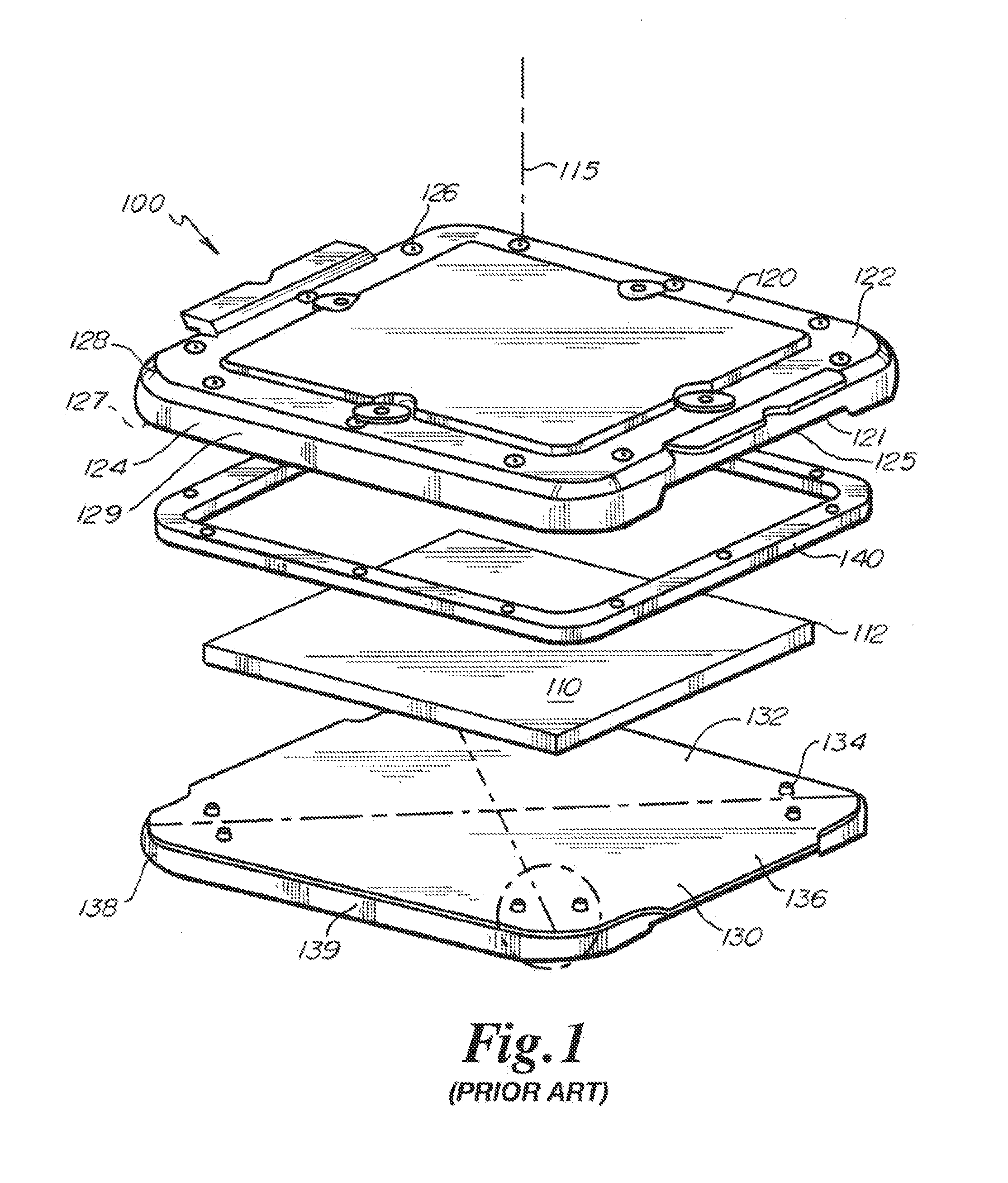Reticle pod with cover to baseplate alignment system
a technology of reticle and base plate, applied in the field of container, can solve the problems of reticle to a degree sufficient to seriously affect any end product, unsatisfactory final product quality, and unsatisfactory contact between reticle and other surfaces during manufacturing, processing, transportation or storage, etc., to achieve tighter dimensional control of pin placement, reduce the generation of particulates, and enhance shock and vibration isolation
- Summary
- Abstract
- Description
- Claims
- Application Information
AI Technical Summary
Benefits of technology
Problems solved by technology
Method used
Image
Examples
Embodiment Construction
[0031]Referring to FIG. 1, a reticle container or inner pod 100 of the prior art is depicted. The inner pod 100 is configured, for example, as a reticle pod container, such as disclosed by Kolbow and Gregerson. The inner pod 100 generally includes a cover 120 capable of sealingly mating with a base 130 to define a hermetically sealed enclosure that holds a reticle 110 for storage, transport, processing and shipping. In FIG. 1, an alternate rigid seal ring 140 is shown as provided between the cover 120 and the base 130. The rigid seal ring 140 attaches to the cover 120 thus sealing the cover 120 to the base 130 by way of the rigid seal ring 140. The inner pod 100, seal ring 140 and reticle 110 are concentric about a central axis 115 that defines an axial direction.
[0032]The reticle 110 is located and supported near each of its corners on reticle contact members 134 mounted to the base 130. The reticle contact members 134 are mounted to the base 130 in a manner known in the art. The i...
PUM
| Property | Measurement | Unit |
|---|---|---|
| structure | aaaaa | aaaaa |
| radius | aaaaa | aaaaa |
| metallic | aaaaa | aaaaa |
Abstract
Description
Claims
Application Information
 Login to View More
Login to View More - R&D
- Intellectual Property
- Life Sciences
- Materials
- Tech Scout
- Unparalleled Data Quality
- Higher Quality Content
- 60% Fewer Hallucinations
Browse by: Latest US Patents, China's latest patents, Technical Efficacy Thesaurus, Application Domain, Technology Topic, Popular Technical Reports.
© 2025 PatSnap. All rights reserved.Legal|Privacy policy|Modern Slavery Act Transparency Statement|Sitemap|About US| Contact US: help@patsnap.com



